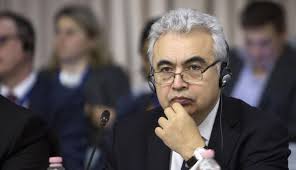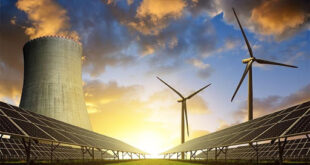Energy demand worldwide reached its fastest pace this decade and saw 2.3 percent growth last year. driven by a robust global economy and stronger heating and cooling demand in some regions. according to the International Energy Agency`s (IEA) report Tuesday.
The IEA`s Global Energy &. CO2 Status Report said higher electricity demand was responsible for over half of the growth in energy demand.
Oil demand rose by 1.3 percent in 2018. led by strong growth in the United States. the report showed. `The United States and China showed the largest overall growth. while demand fell in Japan and Korea and was stagnant in Europe.`
Natural gas consumption grew by an estimated 4.6 percent. its largest increase since 2010 when gas demand bounced back from the global financial crisis.
`Coal demand grew for a second year. but its role in the global mix continued to decline. Last year`s 0.7 percent increase was significantly slower than the 4.5 percent annual growth rate seen in the period 2000-10.` the report indicated.
Renewables increased by 4 percent. accounting for almost one-quarter of global energy demand growth. The power sector led the gains. with renewables-based electricity generation increasing at the fastest pace this decade.
Energy consumption grows
Energy consumption worldwide grew by 2.3 percent in 2018. nearly twice the average rate of growth since 2010. driven by a robust global economy as well as higher heating and cooling needs in some parts of the world.
As a result of higher energy consumption. global energy-related CO2 emissions increased to 33.1 gigatons. up by 1.7 percent on an annual basis. the report said.
In addition. coal-fired power generation continues to be the single largest emitter. accounting for 30 percent of all energy-related carbon dioxide emissions.
`Higher energy demand was propelled by a global economy that expanded by 3.7 percent in 2018. a higher pace than the average annual growth of 3.5 percent seen since 2010. China. the United States and India together accounted for nearly 70 percent of the rise in energy demand.` the report said.
According to IEA. electricity continues to position itself as the fuel of the future. with global electricity demand growing by 4 percent in 2018 to more than 23.000 terawatt-hours (TWh).
This rapid growth is pushing electricity toward a 20 percent share in total final consumption of energy.
`Increasing power generation was responsible for half of the growth in primary energy demand. Renewables were a major contributor to this power generation expansion. accounting for nearly half of electricity demand growth. China remains the leader in renewables. both for wind and solar. followed by Europe and the United States.` the IEA stated.
Fatih Birol. the IEA`s executive director said in the report that last year can also be considered another golden year for gas. which accounted for almost half the growth in global energy demand.
`But despite major growth in renewables. global emissions are still rising. demonstrating once again that more urgent action is needed on all fronts – developing all clean energy solutions. curbing emissions. and spurring investments and innovation. including in carbon capture. utilization and storage.` Birol concluded.
 Iran Energy News Oil, Gas, Petrochemical and Energy Field Specialized Channel
Iran Energy News Oil, Gas, Petrochemical and Energy Field Specialized Channel




